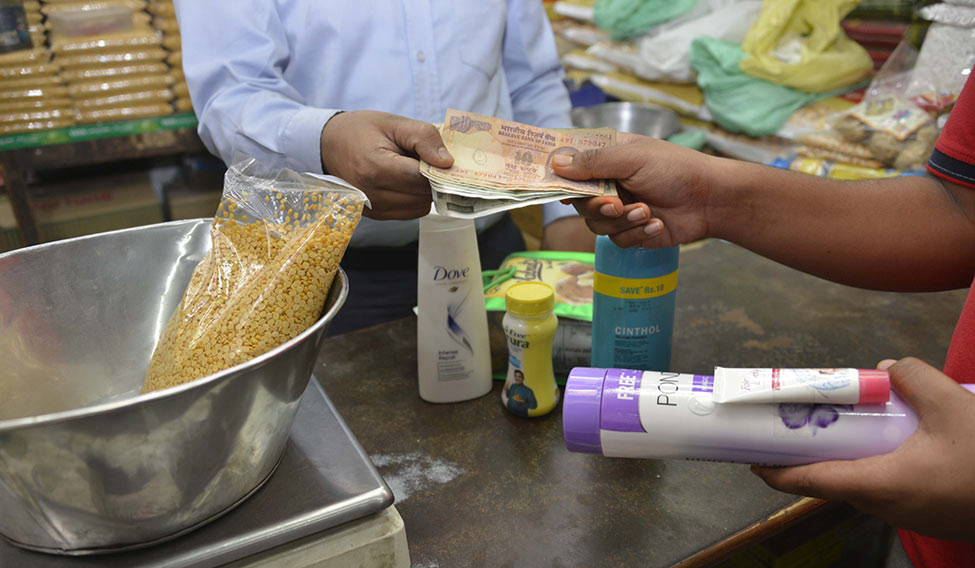Though the goods and services tax (GST) kicked in on July 1, a lot of people are not clear on whether the new tax system makes any difference. Gurugram-based Titash Mazumdar is not part of that crowd. She has done her research and knows that GST is good for her. Mazumdar smartly used GST to her benefit while planning a family vacation to Meghalaya. She waited for GST to come in to effect before making her hotel bookings.
Under the new tax regime, hotel tariffs between Rs 2,500 and Rs 7,500 attract a flat rate of 18 per cent compared with 21 to 22 per cent earlier. GST has made accommodation more economical for frequent travellers. In fact, there is no tax on hotel tariffs less than Rs 1,000. Rooms priced between Rs 1,000 and Rs 2,500 attract GST of 12 per cent.
And it is not just holidays, Mazumdar has studied how and where the new tax system will have an impact. Experts, too, believe that this is the right approach towards GST.
Suresh Sadagopan, founder of Ladder 7 Financial Advisories, said: “Lots of people are only concerned with one or two things that affect them under the new tax rule. Many rely on WhatsApp messages to get acquainted with the rates. But one needs to look at it holistically to understand the change it will bring in the lives of individuals, and in the economy.”
 Titash Mazumdar (with family) waited for GST to come into effect before making hotel bookings for a family vacation. Hotel tariffs are cheaper under GST | Aayush Goel
Titash Mazumdar (with family) waited for GST to come into effect before making hotel bookings for a family vacation. Hotel tariffs are cheaper under GST | Aayush Goel
So far, most experts have said that GST will be beneficial for the economy and will also be good for individuals in the long run. “While we can look at it microscopically, there is a larger good that this will serve,” said Bhuvana Shreeram, a certified financial planner who runs her own advisory service. “If the cost of running businesses come down, companies will become more profitable. More profitable companies will look to expand, thereby creating more jobs.” According to her, this will lead to more purchasing power and hence more spending. “That is how the growth spiral sets in. It is expected that with all this, the gross domestic product will get boosted by 2 per cent,” she said.
Under GST, there are four tax slabs—5, 12, 18 and 28 per cent. The new rates would not lead to a major change in the budget of a household. The increase in the tax for some products is evened out by lower rates on others. For example, rice, wheat, milk, vegetables, fruits, meat and fish are zero tax items under GST. But there are other things that have become expensive. Items like Maggi, pasta and cornflakes are taxed at 18 per cent, compared with 12.5 per cent earlier. Similarly, tax on cosmetics has gone up from 12.5 per cent to 28 per cent.
Electronic goods like air conditioners, washing machines and television are under the 28 per cent slab. Tax has also gone up on ghee, from 5 per cent to 12 per cent, and bottled water, from 5 per cent to 18 per cent. Packaged food has become expensive under GST.
At Mazumdar's house, packaged chicken and fish are consumed quite often and she is expecting her budget to go up on those items. But what annoys her most is the tax on sanitary napkins. They have been put under 12 per cent tax slab.
“I don't understand the point behind exempting bangles and sindoor and taxing sanitary napkins. The former might not be used by a lot of women but sanitary napkins are a necessity, an absolutely essential item in every home. Making it tax free would have probably encouraged more women to buy it,” said Mazumdar.
Her monthly grocery shopping was already done before GST but she has not observed a drastic price increase in purchases after that. The cost of Mazumdar's eight-year-old daughter's school stationery might go up as ink pens have been put under 18 per cent tax bracket. There is a 12 per cent tax on colouring books, pens and pencils.
 Arvind Jain
Arvind Jain
Pratik Jain, leader of indirect tax practice at PricewaterhouseCoopers, said that rather than believing the rumours that GST has increased prices, one should understand the hidden taxes and cess that we were paying earlier. “As consumers, we are used to seeing only value added tax (VAT), generally between 5 per cent and 15 per cent, on our bills,” said Jain. “What we do not see are the other hidden taxes such as excise duty and numerous other components, which are embedded in the prices of products. So, rather than blindly succumbing to the myth that taxes have increased substantially under GST, one should try to appreciate the fact that even before GST, the “visible” VAT along with all the “hidden” taxes would add up to or exceed the new “transparent” GST rate.”
GST subsumes 17 central and 23 indirect taxes that were earlier applied at various stages. One of the underlying principles of GST has been to reduce layers of taxation and complexity for businesses as well as individuals. The “one nation, one tax” regime has come as a boon for people who were house-hunting. Abinash Chaturvedi from Jaipur has been looking to buy a house for some time and he thinks now is the right time. He had shortlisted a flat in Jaipur's Vaishali Nagar, but was waiting for clarity on GST. He has now made up his mind. There is no indirect tax levied on purchase of ready-to-move-in houses, only stamp duty and registration charges apply.
Properties under construction have been made less attractive by taxing them at 12 per cent as against 5.5 per cent earlier. However, with input tax credit (at the time of paying tax on output, you can reduce the tax you have already paid on inputs) available to builders, it is expected that price of properties under construction will also go down.
Small cars have been charged 28 per cent but prices are expected to reduce due to input tax credit being available to manufacturers. “Mid-segment cars are expected to be neutral as there are similar [tax] rates under both regimes,” said Archit Gupta, founder and CEO of ClearTax. “Sports utility vehicles and luxury cars are expected to get expensive due to costs associated with accessories despite the net tax charged under GST (43 per cent) being less compared to the previous net tax of 45 per cent to 46 per cent. Luxury bikes such as Harley Davidson and Suzuki Hayabusa might get costlier due to the 3 per cent cess charged.” Maruti Suzuki recently slashed prices by 3 per cent on its select models to pass GST benefit to consumers.
For lovers of the yellow metal, it is bad news. Gold has become expensive under the new tax regime. It is taxed at 3 per cent as compared to approximately 2 per cent earlier. Before GST, 1 per cent excise duty was there on gold and around 1 per cent was levied by most of the states as VAT.
Similarly, 3 per cent will be levied on silver and polished diamonds. Coupled with making charges taken by jewellers, the prices are likely to go up. But if you are looking to invest in sovereign gold bonds, then you do not need to pay any tax.
Mumbai-based Anishka Anil's only reason to be happy with GST was that her expenses for dining out have gone down. She works with a multinational corporation and stays alone. On most days, she ends up eating out with friends. Restaurants are taxed at 18 per cent now as compared to 20.1 per cent earlier. Plus, they can also claim input tax credit.
All this will translate into a lower bill for your next dinner. However, GST for luxury and high-end restaurants is at 28 per cent and therefore bills at these places would increase marginally. “For me, the bill used to be very confusing earlier with service tax, VAT and some cess,” said Anil. Now it is simple and clear. The [price] reduction is the cherry on the cake.”
If you are a movie buff, there is good news. Before GST, entertainment tax was quite high at 30 per cent to 40 per cent. GST brings a uniform rate of 28 per cent. For tickets below Rs 100, there is no tax.
However, for regional film aficionados, the 28 per cent tax could increase your ticket price. Regional films currently pay either nothing or a subsidised entertainment tax.
Shopping budgets will feel the pinch as apparels above Rs 1,000 are taxed at 12 per cent. For clothes less than Rs 1,000, the tax is 5 per cent. The tax rates are applicable on online purchases as well.
Experts also believe that there might not be so many freebies and discounts on these sites now. “Discounts will mean additional taxes for these websites. They will not like to increase costs. They might also discourage returns and cancellations because they will have to pay the tax amount on their own while collecting tax at source in case of returns and cancellations,” said Sadagopan.
GST IN PERSONAL FINANCE
The increased service tax under GST has attracted a lot of attention from financial services industry. The cost of most financial services are going to go up by 3 per cent. Service tax under GST has been fixed at 18 per cent, up from 15 per cent earlier.
So, whether you are taking a home loan or a vehicle loan, the processing charges will go up. But you need not worry much, as this is just one-time. If you delay EMI and the bank charges you a penalty, there will be a service tax applicable on it.
Similarly, for credit cards, one does not need to pay any service tax during regular course of the billing cycle. But if you have been paying late with 15 per cent service tax, be prepared to shell out more.
“All bank charges will go up due to the increased 18 per cent GST rate. Likewise, the annual fee for your credit cards will also go,” said Balwant Jain, a certified financial planner. Due to increased rate under GST, the cost of making investments will shoot up marginally. GST will also be levied on fund management charges levied by mutual funds. The GST charges would also be levied on any exit load charged by the fund houses in case the redemption is made before the specified period.
People who avail services of financial planners, wealth advisers or chartered accountants will have to pay more because of the new tax rate. The increase of tax applicable for insurance will vary depending on the particular insurance product. For term plans, unit-linked insurance plans, health insurance, personal insurance, vehicle insurance and critical insurance the cost will go up due to increase of tax from 15 per cent to 18 per cent.
However, for other products like annuity, the GST applicable would be lower (1.8 per cent instead of 1.5 per cent). For endowment insurance plans, the GST for the first year premium would be increased from 3.75 per cent to 4.5 per cent and for subsequent years it would be half of the first year rate.
Luv Jasuja, a self-employed professional, is disappointed with the government's move to increase tax for insurance premium. With eight or nine different kinds of insurance policies in his family, he feels this will be a major burden on his wallet. “On one hand the government is pushing for a health cover for everybody, on the other they are increasing the rates,” said Jasuja. “This is not going to help and will dissuade people from buying insurance.”
However, Shalini Dhawan, co-founder and director of Plan Ahead Wealth Advisors, said that hike in tax for premiums should not impact your decision of buying insurance. “It is true that GST will make buying insurance more expensive, but it is very important for an individual to secure his life, especially when the individual is the sole bread-earner of the family,” said Dhawan.
If you buy shares directly, then, too, because of service tax you will have to pay more. For example, brokerage which was charged at Rs 100 for a share transaction had a service tax of 15 per cent, this would go up to 18 per cent under the new norm. This will mean a net payout of Rs 118 instead of Rs 115.
Input tax credit is one of the most important features of GST. Say, there is a manufacturer and tax payable on output, that is his final product is Rs 450. Tax paid on input, that is raw material, is Rs 300. He can claim input credit of Rs 300 and needs to pay only Rs 150 as tax.
It is believed that the mechanism of input tax credit will ultimately reduce the final price to the wholesaler, retailer and consumer, and cause a paradigm shift from individuals paying more taxes to more individuals paying taxes.
The other interesting aspect about GST is its anti-profiteering provision. Since the GST, along with input tax credit, is eventually expected to bring down prices, a National Anti-profiteering Authority (NAA) is to be set up to ensure that the benefits are transferred to the consumers. Also, entities that hike rates inordinately, citing GST as the reason, will be checked by this body.
Once the company or entity, which has profiteered illegally, is identified, it can be asked to reduce prices and to return to the customer the sum equivalent to the price reduction along with 18 per cent interest from the date the higher sum was collected. The authority would be able impose penalty on the company or cancel its registration.
As a customer, if you understand that tax on a particular product has reduced but your shop is not passing it on, you can approach the anti-profiteering authority.
“While it does seem that GST is likely to be deflationary, we do believe that interest rates are unlikely to go up in a hurry. Most of us are used to thinking in absolute terms, and are therefore not happy with interest rates at 6 per cent to 7 per cent, considering inflation is currently very low and likely to remain in the range of 2 per cent to 4 per cent for a period of time, fixed income investors could actually be in a good place, with real returns at a very attractive level,” said Dhawan.
“'Thus, investors may do well to maintain their fixed income exposure at this point, or in fact increase the the same for short-term and medium-term financial goals. If they have a seven to 10 year view, they may consider enhancing equity exposure but only gradually,” she said.







